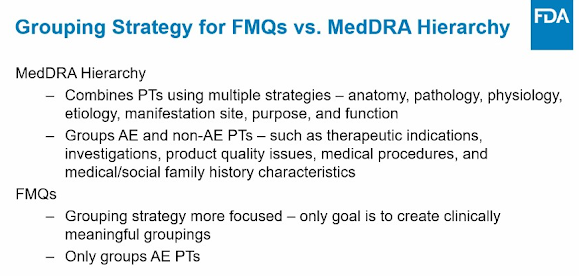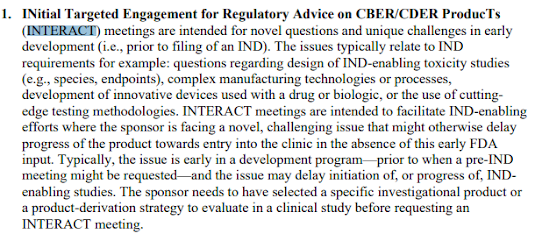For any drug development program, the early and sometimes frequent communications are critical. However, the formal communications between the sponsor and the FDA are a cumbersome process. The sponsor representatives can not directly reach out to FDA reviewers (such as medical reviewer, statistical reviewer, clinical pharmacology reviewer, CMC reviewer,...). On the sponsor side, the communications with FDA is always through the regulatory affairs group. On the FDA side, the communication with the sponsor is through the regulatory project manager (RPM) - each review division at FDA has its own RPM. Direct communications between the sponsor representatives and the FDA reviewers/officers are not good practice and can cause the trouble down the road. We all knew how badly the situation was with Biogen's Aduhelm approval where Biogen executives met with FDA officials outside the normal communication channel. See "FDA chief asks for independent investigation into approval of Biogen's Alzheimer's drug Aduhelm".
The FDA RPM: The review division regulatory project manager (RPM) is the primary point of contact for communications between IND sponsors and FDA during the life cycle of drug development, and has comprehensive knowledge of the drug and its regulatory history. The RPM is also the primary contact for facilitating the timely resolution of technical, scientific, and regulatory questions, conflicts, or communication challenges between the sponsor and the review team. If sponsors encounter challenges in obtaining timely feedback to inquiries to the review division RPM, they should contact the RPM’s next level supervisor for timely resolution of the issue.
Communications with FDA are usually through the formal meetings. There are different type of meetings for different purpose. The processes for requesting the formal meetings are described in FDA's guidance below:
In
Regulatory Education for Industry (REdI) Annual Conference 2022 - Day 1, Dr Kevin Bugin gave a PSUFA overview where additional type of meetings with FDA were discussed and FDA officer, Jeannie Roule presented "Guidance for Industry: Formal Meetings Between the FDA and Sponsors or Applicants of PDUFA Products".
Different type of Meetings with FDA and the Comparisons:
The Prescription Drug User Fee Act (PDUFA) was created by Congress in 1992 and authorizes FDA to collect fees from companies that produce certain human drug and biological products. Since the passage of PDUFA, user fees have played an important role in expediting the drug approval process. PDUFA needs to be reauthorized by Congress every five years.
PDUFA VII for fiscal years 2023 through 2027 is
being discussed by Congress and is expected to be reauthorized before the end of the current fiscal year.
To-be-reauthorized PDUFA VII will create some additional meetings with FDA, specifically, Type D meeting. Once the PDUFA is reauthorized by Congress, the sponsor can request for Type D meeting.
FDA also had a meeting called INTERACT. INTERACT stands for
INitial Targeted Engagement for Regulatory Advice on CBER/CDER ProducTs. It is like the pre-pre-IND meeting and is especially useful in CAR-T, Gene therapy, xenotransplantation development programs.














